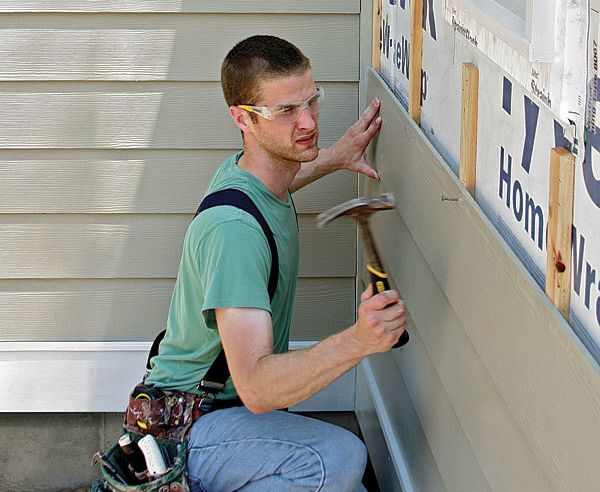Keep Siding Dry With a Vented Rain Screen
The best way to deal with water is to let it drain away or dry out, and a gap of less than an inch behind the siding ensures both.

Synopsis: Water always finds a way behind siding. Once it has done so, its potential for causing problems increases, and its potential for escaping or drying is greatly reduced. To prevent this trapped water from causing damage behind the siding, we need to give it an easy way out. It needs a place to go and a way to dry — and a vented rain screen offers both. Although the details of building a vented rain screen can be tricky, senior editor Justin Fink explains the steps involved and answers some common questions about matters such as how big the gap should be behind the siding, how to keep insects out, whether to vent at both the top and bottom, whether it’s OK to tie the exhaust into the attic vents, and whether to vent corner boards. He also includes information on materials — battens, wraps, mats, and membranes.
Water is lazy. It will never work hard to find its way into your house. In fact, water always will follow the path of least resistance. That’s why the roofing membrane, asphalt shingles, siding, housewrap, and all the flashing details on a house are installed so that they lap over each other. They work to prevent the lazy water from being sidetracked as it follows its path from the clouds to the ground.
But houses are made of wood, and over time, wood shrinks and expands. Nails loosen, siding joints open, and finishes wear away. It eventually becomes easier for water to penetrate a home’s outer layers of defense, especially the siding.
Once water has gotten through that outer layer, its potential for causing problems increases, and its potential for escaping or drying is greatly reduced. To prevent this trapped water from causing damage behind the siding, we need to give it an easy way out. It needs a place to go and a way to dry — and a vented rain screen offers both.
Trust me, your siding leaks
For many people reading this, the biggest challenge will be accepting the fact that the siding on their house leaks. So I’ll be clear: It doesn’t matter whether your house is clad with shakes, shingles, clapboards, vinyl, or stucco, your siding leaks. How do I know? Because water always finds a way behind siding, whether through gaps or cracks in the installation, wood movement, heavy downpours, or the heat of the sun driving moisture toward the cooler back of the siding.
Don’t panic. Leaks are part of the reason that houses are built with weather-resistive barriers such as housewrap or felt paper under the siding. Even when installed correctly, though, housewrap isn’t a guarantee against water problems.
Siding installed tight against housewrap isn’t ideal for a number of reasons. Yes, housewrap is designed to shed water, but it does have a weakness. Surfactants in soap and power-washing chemicals, and tannins and sugars from wood siding, can reduce the surface tension of the water, allowing it to pass through the microscopic openings in the housewrap. Also, dirt can clog these openings, allowing liquid water to pass. The best way to eliminate this problem is to create a physical gap between the back of the siding and the face of the housewrap.
Less than an inch makes drainage possible
Providing a physical gap between the back of the siding and the surface of the house wrap is like eliminating a bridge between two land masses. Remember that liquid water is lazy, so when given an uninterrupted conduit for drainage and all the appeal of gravity, it will follow that path every time. As long as that path runs straight down the back of the siding to daylight, bulk water isn’t a threat.
Water drainage is only one part of the assembly, however. For a rain screen to function properly, it must also have a steady flow of air to help promote drying.
For more photos, illustrations, and details, click the View PDF button below:





